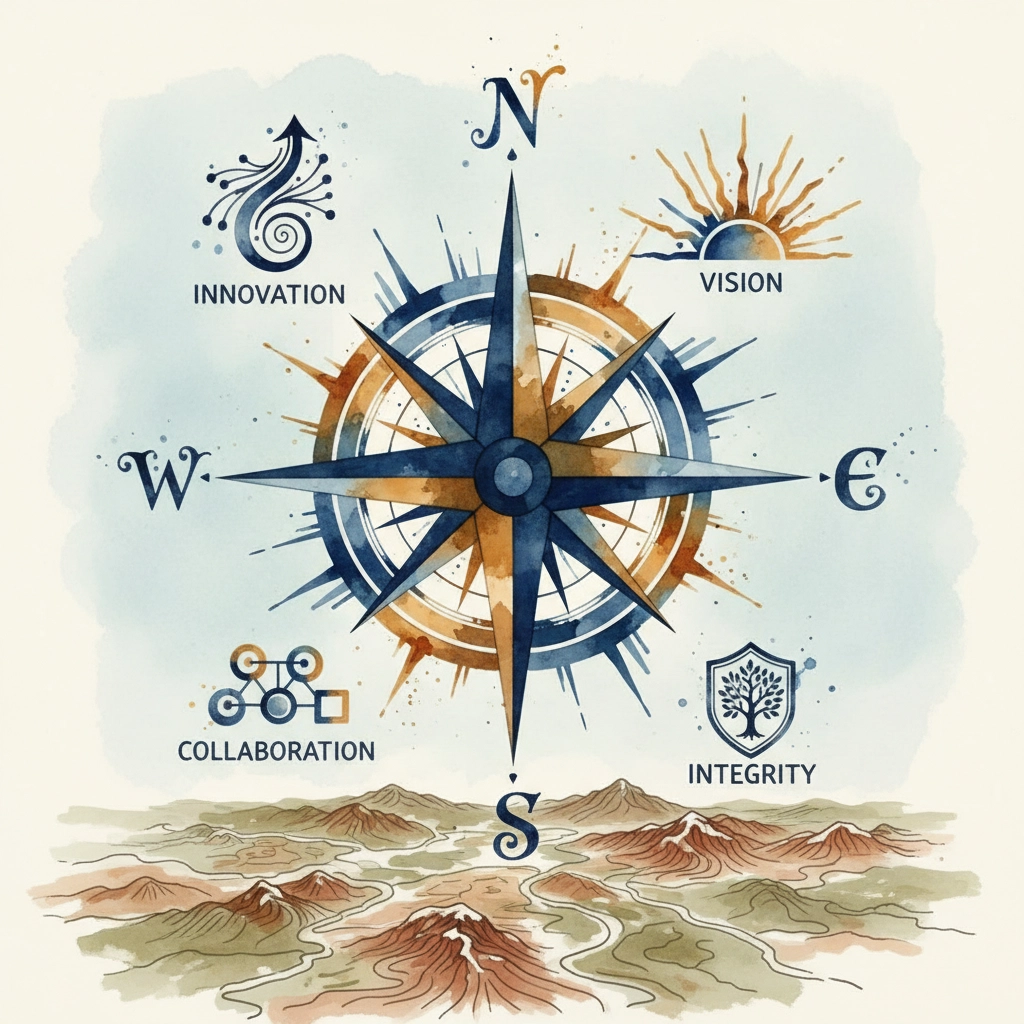The Mirror of Messaging
When organizations center their marketing around mission, they create an unavoidable mirror. This reflection shows not just what they aspire to be, but what they actually are in practice. The gap between these two realities becomes visible in every communication.
Consider how messaging reveals organizational truth. A nonprofit claiming to prioritize community engagement cannot hide behind rhetoric when their actual programs lack meaningful participation opportunities. Their marketing becomes a continuous confrontation with this disconnect, demanding either authentic change or honest acknowledgment of current limitations.
This mirror effect extends beyond external communications. Internal teams begin to see their own work differently when mission becomes the foundation for all messaging. Staff members recognize when their daily activities align with stated purpose—and when they do not. Marketing becomes a tool for organizational accountability, creating transparency that benefits both internal culture and external relationships.
Values as Navigation Points

Mission-driven marketing requires organizations to identify their core values with precision. This process goes beyond surface-level brainstorming sessions or committee-driven mission statements. It demands genuine examination of what matters most when resources are limited, when difficult decisions arise, when competing priorities create tension.
The act of articulating values for marketing purposes forces organizations to make choices. They cannot claim to value everything equally. They must prioritize, which means acknowledging what they are willing to sacrifice for what they consider most important. This prioritization becomes a form of organizational self-knowledge, revealing character in ways that few other activities can match.
Values-based messaging also creates external accountability. When organizations publicly commit to specific principles through their marketing, they invite scrutiny. Supporters, critics, and neutral observers all become witnesses to whether actions match stated beliefs. This external pressure can drive positive change, as organizations work to align their practices with their proclaimed values.
The Story of Becoming
Every organization exists in a state of becoming rather than being. They are always in process, always changing, always moving toward or away from their stated purpose. Marketing captures moments in this ongoing story, creating snapshots of organizational identity at specific points in time.
This temporal aspect of mission-driven marketing creates opportunities for honest reflection. Organizations can acknowledge where they have been, where they currently stand, and where they hope to go. They can admit mistakes, celebrate progress, and invite others to join them in the journey toward better alignment with their mission.
The story of becoming also allows for nuance and complexity. Organizations need not present themselves as perfect embodiments of their mission. They can be transparent about challenges, limitations, and ongoing efforts to improve. This honesty often creates stronger connections with audiences than polished presentations of organizational perfection.
Beyond Data and Trends

Traditional marketing relies heavily on data analysis and trend identification. Mission-driven marketing requires these tools but cannot stop there. The deeper questions demand different approaches: reflection, dialogue, philosophical examination, and honest assessment of organizational character.
Data can tell organizations what messages perform well, which audiences respond most positively, and how to optimize for engagement. But data cannot answer whether the organization is staying true to its purpose or whether current strategies align with core values. These questions require sustained reflection and internal dialogue.
Trend analysis helps organizations understand cultural shifts and audience preferences. But trends cannot determine whether an organization should adapt its message to match popular sentiment or maintain consistency with established principles. This decision requires philosophical clarity about the relationship between mission and cultural relevance.
The Practice of Reflection
Reflective marketing practice involves regular examination of organizational motivations and methods. This might include quarterly assessments of whether marketing messages accurately represent current organizational capacity and commitment. It could involve annual reviews of how well marketing strategies support mission advancement rather than simply driving metrics.

Teams can develop habits of reflective practice by asking different questions during planning sessions:
- Instead of “What message will perform best?” ask “What message best represents our current reality?”
- Instead of “How can we increase engagement?” ask “How can we invite authentic engagement with our actual mission?”
- Instead of “What will drive conversions?” ask “What will build genuine relationships?”
- Instead of “How do we compete?” ask “How do we serve?”
This approach does not eliminate attention to performance metrics or audience response. Rather, it places these concerns within a larger framework of organizational integrity and mission alignment. Results matter, but they are not the only measure of success.
The Authentic Voice
Organizations that commit to reflective marketing often discover their authentic voice through the process itself. This voice emerges from honest examination of values, careful attention to mission alignment, and willingness to acknowledge both strengths and limitations.
The authentic voice sounds different from organization to organization, even within similar mission areas. It reflects organizational personality, history, and current capacity. It does not try to sound like other organizations or match popular communication styles that do not fit organizational character.
Finding this voice requires time and experimentation. Organizations must try different approaches, assess how well each approach represents their true identity, and gradually refine their communication style. The process itself becomes a form of self-discovery, revealing aspects of organizational character that may not have been previously recognized.
Integration and Alignment

The ultimate goal of reflective marketing is integration between internal reality and external communication. This alignment creates coherence that audiences can sense, even if they cannot articulate exactly what makes certain organizations feel more trustworthy or compelling than others.
Integration requires ongoing attention and adjustment. Organizations change over time, developing new capacities, facing different challenges, and evolving their understanding of their own mission. Marketing must evolve alongside these changes, maintaining honest representation of current organizational reality.
This dynamic alignment creates marketing that serves multiple purposes: external communication, internal accountability, and organizational development. Marketing becomes a tool for becoming the organization you claim to be, not just for convincing others that you already are that organization.
The Larger Story

Mission-driven marketing, approached as reflective practice, contributes to a larger organizational story of growth, learning, and service. It creates transparency that builds trust, accountability that drives improvement, and communication that invites genuine partnership rather than transactional relationships.
Organizations that embrace this approach often find that their marketing becomes more effective over time, not because they become better at persuasion, but because they become more authentic in their communication and more aligned in their actions. The reflection process itself creates the conditions for compelling marketing by ensuring that what organizations communicate matches what they actually offer.
This larger story extends beyond individual organizations to the broader mission-driven sector. When organizations commit to reflective marketing practices, they contribute to a culture of authenticity and accountability that benefits everyone working toward social change and community improvement.
This post is grounded in the Space as Metaphor framework, which views space as "metaphor for method, moral orientation, and mode of transformation." The framework helps us understand grant writing relationships not as transactional exchanges, but as sacred spaces requiring careful cultivation and ethical stewardship.

